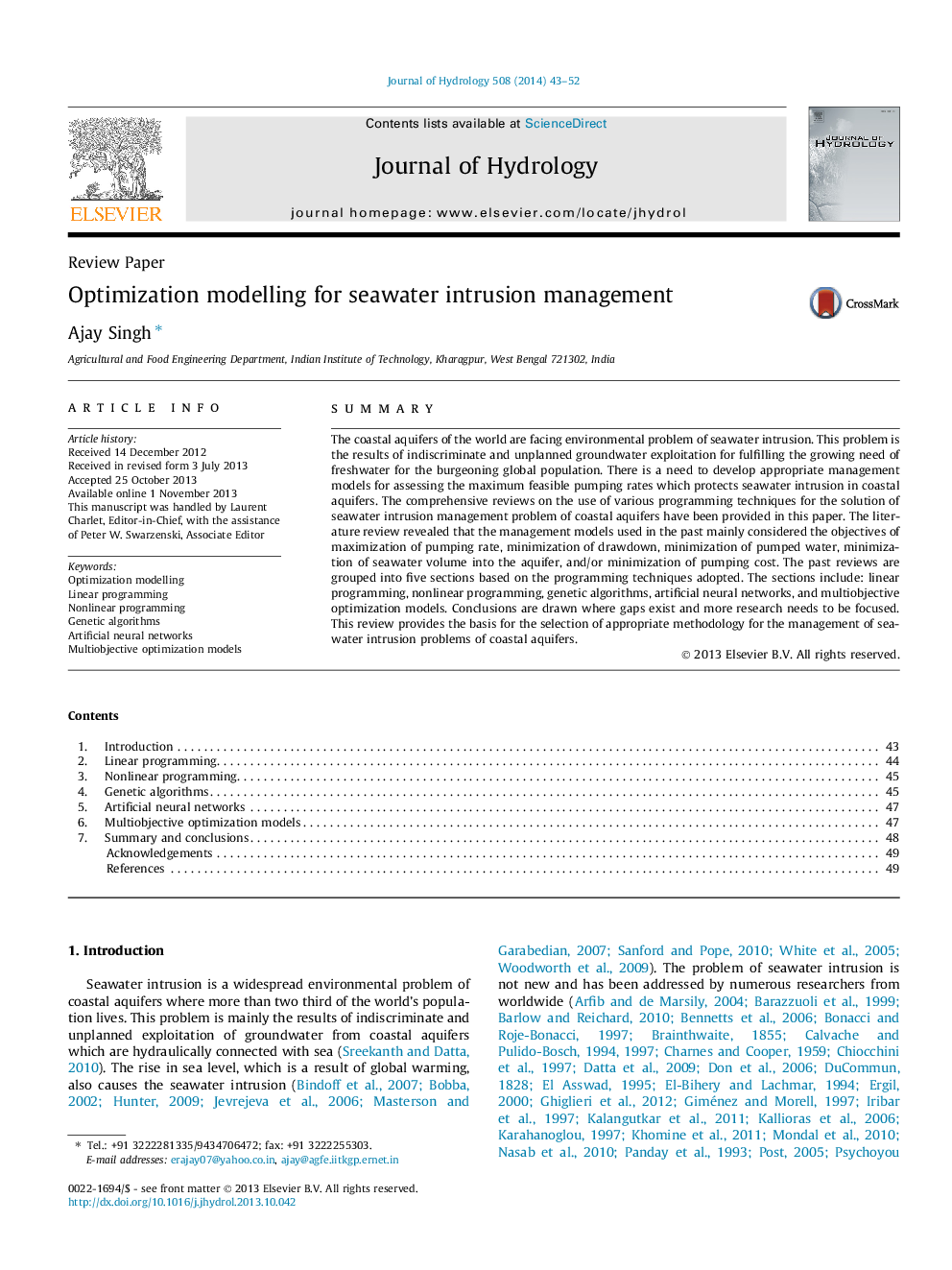| Article ID | Journal | Published Year | Pages | File Type |
|---|---|---|---|---|
| 4576035 | Journal of Hydrology | 2014 | 10 Pages |
•Various optimization techniques were analyzed for managing seawater intrusion.•Maximizing pumping rate and minimizing saltwater intrusion were the main objectives.•The GAs was used for attaining global optimal solution of intrusion problems.•The ANNs were used as surrogate models.•Combined uses of optimization and simulation models were preferred recently.
SummaryThe coastal aquifers of the world are facing environmental problem of seawater intrusion. This problem is the results of indiscriminate and unplanned groundwater exploitation for fulfilling the growing need of freshwater for the burgeoning global population. There is a need to develop appropriate management models for assessing the maximum feasible pumping rates which protects seawater intrusion in coastal aquifers. The comprehensive reviews on the use of various programming techniques for the solution of seawater intrusion management problem of coastal aquifers have been provided in this paper. The literature review revealed that the management models used in the past mainly considered the objectives of maximization of pumping rate, minimization of drawdown, minimization of pumped water, minimization of seawater volume into the aquifer, and/or minimization of pumping cost. The past reviews are grouped into five sections based on the programming techniques adopted. The sections include: linear programming, nonlinear programming, genetic algorithms, artificial neural networks, and multiobjective optimization models. Conclusions are drawn where gaps exist and more research needs to be focused. This review provides the basis for the selection of appropriate methodology for the management of seawater intrusion problems of coastal aquifers.
